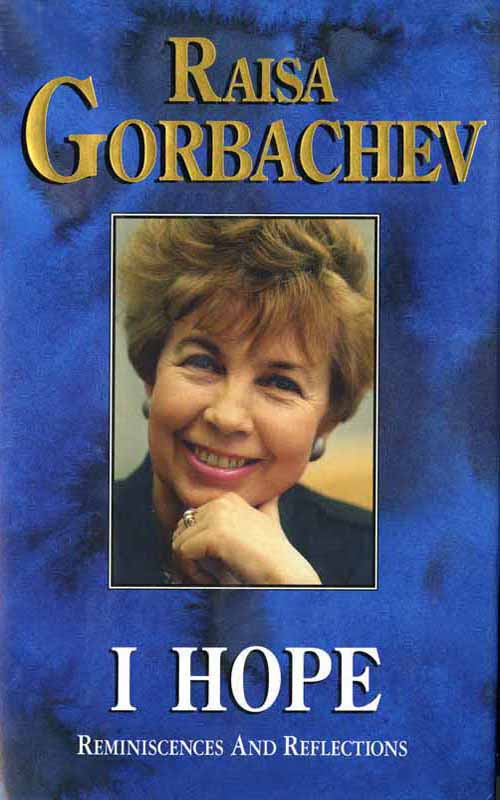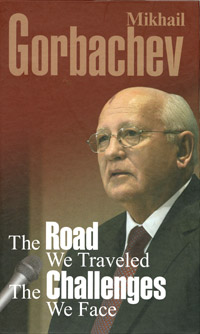7 апреля 2017
International Conference “Girlhood in Turbulent Times: Gender Equality as a Cultural Norm and a Social Practice”, 7 April 2017The current generation of teenage and adolescent girls is extremely diverse and defies understanding by adults. Russia is not unique in this respect – anxiety, or even sometimes moral panic, along with a host of other social problems accompanying girls as they grow up, are typical of all modern societies. Research of modern practices and images of girlhood is clearly needed, both in a country-specific context and through comparative international studies. Although we have an established tradition of teenage and youth subculture studies, young and teenage girls have long been invisible, with no dedicated research on the subject. Therefore, the term Girlhood Studies is in itself still a kind of an intellectual challenge. In fact, girlhood is a critical period for identity formation and development of a woman, spanning approximately twelve years (from six to eighteen). Gradually, an interdisciplinary research area, Girlhood Studies, is taking shape, combining both research and activism. This research widely employs the methods used in feminist and gender studies and providing for active involvement of girls themselves. The discourse of Girlhood Studies enhances the theoretical vision developed in gender studies and taps into entire strata of social data that need thorough analysis. In Russia, the launch of Girlhood Studies and the first discussion of Girlhood Studies agenda and prospects took place at the Gorbachev Foundation in December 2012. This discussion triggered the researchers’ dialogues about “Girlhood in Turbulent Times”, initiated by The Raisa Maximovna Club (The Gorbachev Foundation),The Journal of Social Policy Studies, The Heinrich Böll Foundation, and the international journal Girlhood Studies: an Interdisciplinary Journal. As part of this project, a special, themed issue of Girlhood Studies: an Interdisciplinary Journal was published – Girlhood Studies in Post-Socialist Times. The launch took place as part of a Round Table Discussion hosted by the National Research University – Higher School of Economics (Moscow). The International Conference “Girlhood in Turbulent Times: Gender Equality as a Cultural Norm and a Social Practice” which took place on April 7, 2017 brought together researchers and activists from Russia, Kyrgyzstan, Sweden, and South Africa. Speakers offered a wide variety of perspectives and insights showing that modern Girlhood Studies have formed an intellectual activist space which is becoming increasingly important today and is directly linked with actions and decisions that will shape our future. This stimulates further dialogue between researchers and activists and a wider, public discussion. The conference was moderated by Olga Zdravomyslova (The Gorbachev Foundation), Elena Smirnova-Yarskaya (The Journal of Social Policy Studies), and Irina Kosterina (The Heinrich Böll Foundation).
CONFERENCE PROGRAM
The articles presented by the conference speakers
Challenging turbulent times: towards a framework for girl-led transnational dialogues to combat sexual violence
Claudia Mitchell, McGill University, Canada
One of the legacies of globalization is the increased recognition of a sometimes borderless world which erases an ‘over there’ and ‘over here’, and which diminishes some of the distinctions between the idea of Global North and Global South. Nowhere is this more apparent than in concerns about the well-being of girls and young women in relation to sexual violence. In the Canadian context, for example, we have become increasingly aware of the shameful situation of the many missing and murdered Indigenous girls and women, and statistics that note that Indigenous women are 2.5 times more likely to be victims of violence, and 6 times more likely to be killed than non-Indigenous women. The rates of violent crime against women aged 15 to 24 are 42% higher than rates for women aged 25 to 34, and nearly double the rates of women aged 35 to 44.This concern for the well-being of girls and young women was evident at a roundtable on gender and circumpolarity –convened by the Gender Forum at the University of Mid-Sweden in October 2015. In bringing together feminist scholars from Norway, Sweden, Russia, Finland, and Canada it was clear that while the idea of ‘north’ occupies very different meanings in these various countries (particularly in relation to Indigenous and non-Indigenous peoples), there are many critical convergences when it comes to the lives of girls and young women, with high rates of sexual violence, and challenges to their well-being, clearly at the top of the list. Speaking of the popular perception that Nordic girls are the “ones who won the lottery”, Finnish scholar Elina Oinas (2011) reminds us of the increasing recognition of the limitations of talking about these critical convergences about ‘the north’ in the absence of dialogue with and about the social and material contexts of ‘the south.’ We know that world-wide these numbers are particularly shocking in relation to girls and young women: over 120 million girls (one in ten) report some form of sexual violence.
The Sustainable Development Goals (SDGs) that call for good health, well-being, and gender equality highlight the significance of a global agenda. With the transition from the Millennium Development Goals to the SDGs, girls’ completion of secondary education is now positioned as a key strategy to achieving the entire 2030 Agenda. The 2016 UNFPA State of the World Population report, 10: How our Future Depends on a Girl at this Decisive Age identifies the age of 10 as a critical turning point in girls’ lives. The girls who were 10-years-old at the start of the SDGs in 2015 will be 25 years old by 2030. During this transition from girlhood to adulthood, a number of decisions will affect girls’ experiences and social positions related to puberty, schooling, sexual health, marriage, childbirth, and entry into the paid workforce. The success of the SDGs depends on investing in policies, institutions and strategies that support girls, as well as their families and communities through these decisions. But what might sustainability look like in the context of addressing sexual violence in this global context and what strategies might be particularly promising in relation to what have come to be called ‘turbulent times’ for girls and young women? In this article, I consider one area of promise and hope, that being dialogue that starts with and through girls and young women themselves. In so doing I draw on instances where this dialogue is currently happening in a six year partnership project Networks for Change and Well-being: Girl-led ‘From the Ground Up’ Policy to Address Sexual Violence in Canada and South Africa, and point to the development of a framework that I refer to as ‘circles within circles’ and which seeks to keep this type of dialogue going between and among girls and young women across several country contexts.
Girls as “warriors”: Addressing gender inequality in turbulent times in South Africa
Naydene de Lange , Nelson Mandela University , South Africa
South Africa, in its 23rd year of its democracy, is indeed experiencing turbulent times, still grappling with “establish[ing] a society based on democratic values, social justice and fundamental human rights” (The South African Constitution, 1996: 1), and enabling equality for women. Connell (2005: 1801) drawing on her earlier work (2002) acknowledges that “[g]ender inequalities are embedded in a multidimensional structure of relationships between men and women, which, as the modern sociology of gender shows, operates at every level of human experience, from economic arrangements, to culture, the state, to interpersonal relationships and individual emotions.” Draper (2017) in an overview of the recent World Economic Forum posits that “[t]hese times would test any government and country, but [that] South Africa faces its own domestic challenges [contested political power] that in the best case will inhibit its responsiveness, and in the worst case exacerbate the domestic political impact of these global currents [for example negative growth]”. It is within this space of contested political power that addressing the inequalities of women are pushed back and that the experiences of most women remain an unacceptable reality filled with inequalities, oppressions, and violence. While there are efforts in South Africa to acknowledge women as equal partners in sustainable socio-economic development, most girls and young women remain in a place of deep inequality. When the economy suffers, people suffer, and when people suffer, the face of suffering seems to be that of children (girls) and women. The intersectionality of being a girl/woman, being African, being poor, and in or from a rural context deepens the experiences of inequality.
When will the inequalities that women experience change? Mosua (2017) points out that women’s rights and issues were shelved during colonisation and post-colonisation:
During colonization and post-colonial eras, African women of various backgrounds, have been left with no time to speak for themselves. … Women joined hands with their men to fight colonization and during the process the fight for gender-empowerment was suspended as they were urged to shelve their concerns and join the men in the fight for their conquered land. (Mosua 2017: 69-70).
It seems that women’s concerns are still not taken seriously.
How can we make networks of solidarity that work across different kinds of regimes of oppression?Angelika Sjöstedt Landén & Katarina Giritli-Nygren, Forum for Gender Studies, Mid Sweden University
The question of how to make networks of solidarity that work across different kinds of regimes of oppression has been discussed by feminist scholars around the world (cf. Mohanty 2003; 2013; Dufour, Masson & Caouette 2010, Stone Mediatore 2003; Kaplan, Alarcon & Moallem 1999). Efforts to make feminist unity in the name of gender studies across different sets of borders also inevitably unveils the cracks and differences dividing feminist communities. How do we account for this while doing solidarity that can cut across regimes of oppression? We had the opportunity to discuss the conditions of possibility for doing border- crossing scholarly cooperation at the conference Girlhood in the Turbulent Times: Gender Equality as a Cultural Norm and Social Practices in Moscow on the 8th of April 2017. We raised questions regarding the ways in which we can challenge the different kinds of brick walls that we experience in institutional, national and other contexts, and that we need to get up against for doing transnational cooperation in the field of gender- and girlhood studies. In earlier work, we have written about the internal activism and strategies of ambivalence we need to adopt in order to navigate the changing academic landscape in order to make gender studies part of our university at all (Fahlgren, Giritli-Nygren & Sjöstedt Landén 2015; Sjöstedt Landén & Giritli-Nygren 2016). International networking practices are idealized in Swedish academia through the promotion of ‘internationlisation’ for excellence (Mählck 2013), but there is a strong need to critically assess the conditions and possibilities for feminist scholarship that arise in the landscape of internationalisation across different regimes of oppression.
The examples brought up at the conference with attempts to do border-crossing work spanned between cooperation with scholars acing in northern and southern hemispheres as well the north and northernmost north constituting a community of ‘northern circumpolar’ relations of feminist scholarly cooperation. We have experiences of working in a variety of international networks of feminist scholars and activists that aims to transgress boundaries of academic and national regimes through efforts of setting up northern circumpolar connections as well as connections and communities of feminist scholars crossing the equator. It is therefore not to say that this is something we are doing ‘elswhere’. Philomena Essed (2013) points out that social justice work is a kind of leadership and we align with this thought, but how do we actually do it? In this paper we would like to stress the need to examine our own positionality and conditions of possibility for going forward with such work discussing strategies, challenges and the openings.
|
|
The XXI century will be a сentury either of total all-embracing crisis or of moral and spiritual healing that will reinvigorate humankind. It is my conviction that all of us - all reasonable political leaders, all spiritual and ideological movements, all faiths - must help in this transition to a triumph of humanism and justice, in making the XXI century a century of a new human renaissance.
|
|
Русский |






